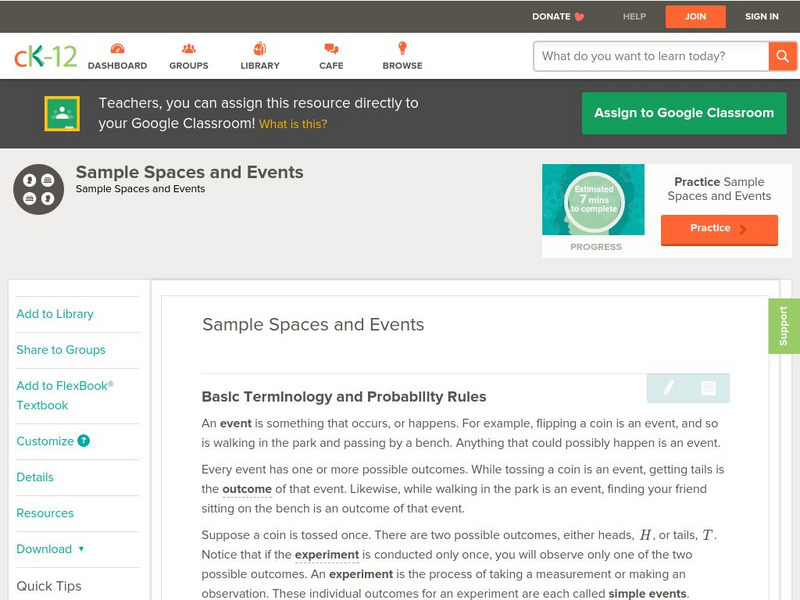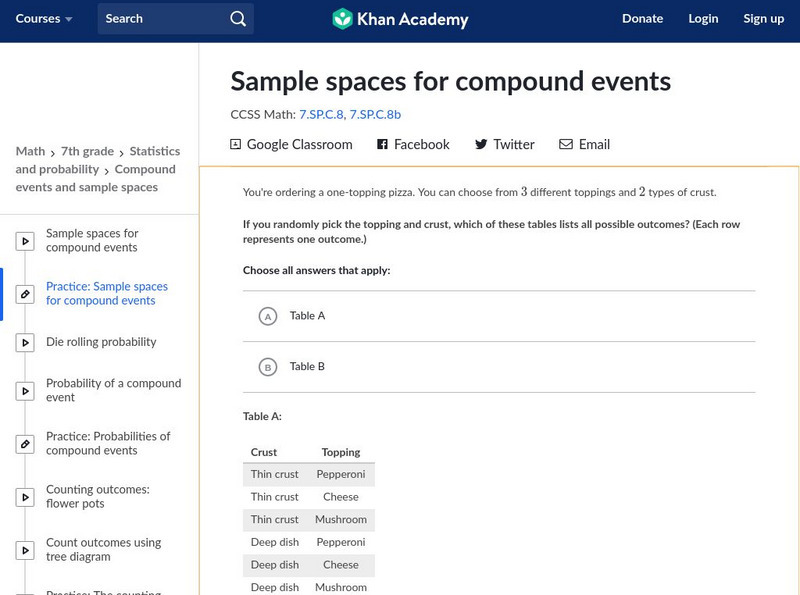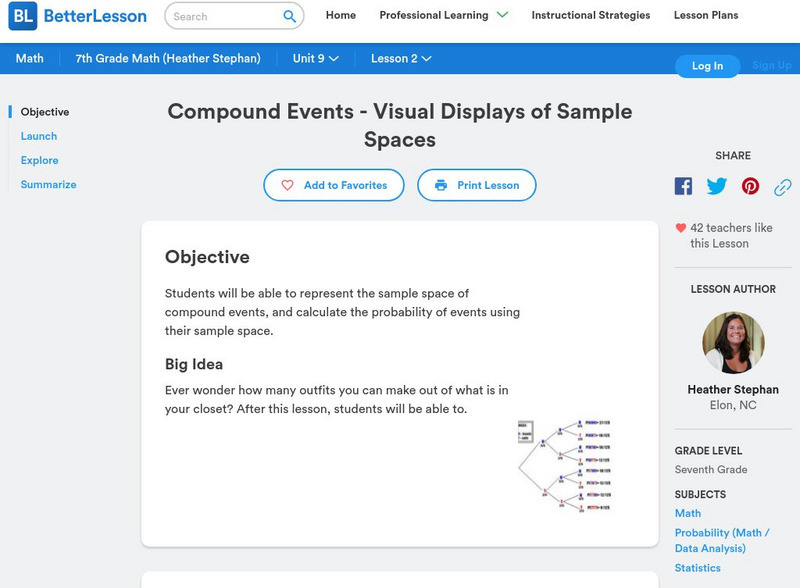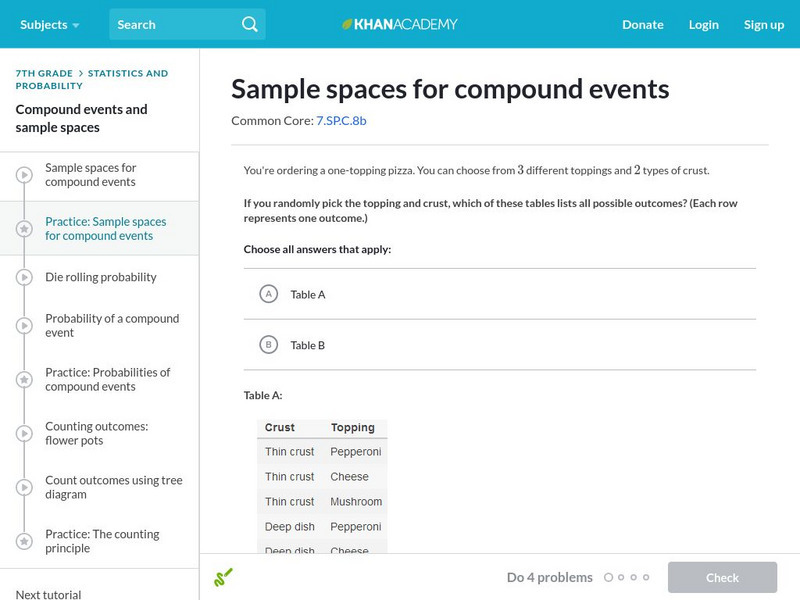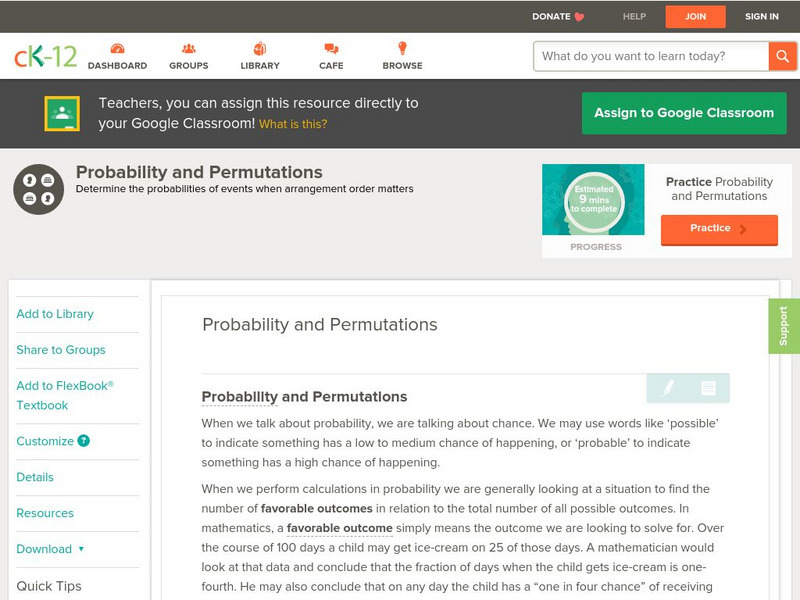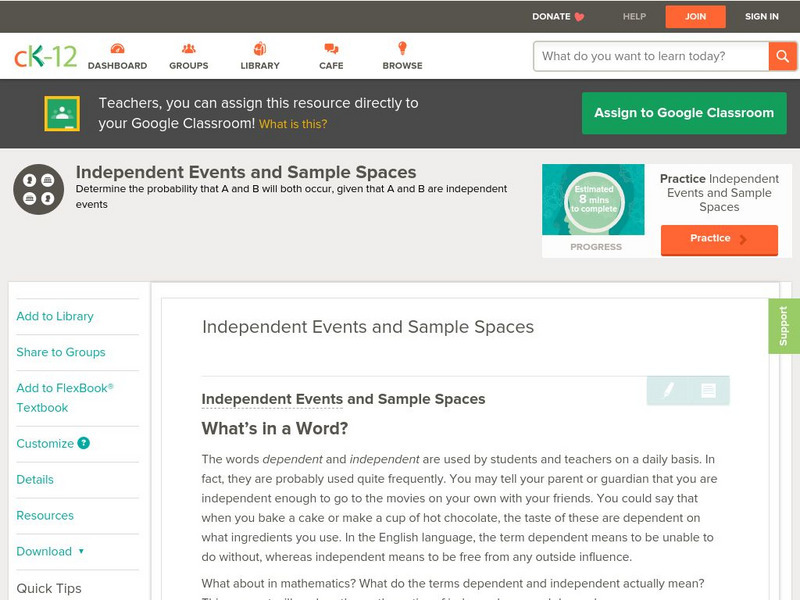Hi, what do you want to do?
Curated OER
Finding the Probability
Ninth graders investigate the concept of probability. They use a clear objective that is a visual cue for what is required for the lesson. They apply the basic practices of probability to real life like situations.
Curated OER
Badminton or Basketball?
Students explain why for a group of n people, there are an equal number of possibilities for subgroups of size k (such that k < n) and size n - k.
Discovery Education
3D Printing Robots
What is water worth to you? The answer probably depends on many different variables. Learners explore the value of water in space and what it takes to transport the resource to locations in a galaxy far far away. They then consider...
Curated OER
Analyze This
Sixth graders use a video and the internet to determine whether a game is fair or unfair. In this probabilities lesson plan, 6th graders determine the fairness of a game based on the probabilities of the outcomes.
Curated OER
What's in the Bag?
Students calculate the probability of an event occurring. In this statistics instructional activity, students calculate the outcome using combination and permutation. They differentiate between-theoretical and experimental probability.
Curated OER
Atlatl Lessons for Grade 7
Seventh graders examine force and motion. In this seventh grade mathematics/science instructional activity, 7th graders collect and analyze data regarding the use of an atlatl to throw a spear. Students describe and analyze the motion...
Curated OER
Probability Review
High schoolers engage in a lesson that is concerned with the concepts related to probability. They review the key properties of statistics involved in the measurement of probability that includes mean, median, and mode. The lesson...
Curated OER
Fourth Grade Science
In this science worksheet, 4th graders complete multiple choice questions about electricity, the sun, sound, and more. Students complete 25 questions.
Curated OER
Origins: Earth is Born
Students collect and identify micrometeorites from space. Students create collection devices and retrieval methods for matter. They prepare slides and view particles found. Students discuss where the identifiable particles originated...
PBS
Remove One
With a set of 15 chips and a number line, learners predict what sums may occur with the rolling of two dice. When their sum comes up, they remove one of the chips from their number line with the objective of being the first to remove...
Curated OER
Lucky Number
Students use data from simulations to make theoretical generalizations. They discuss possible relationships between several given events and gain understanding about their own mathematical intuition about likelihood.
Curated OER
Properties of Soil: Original Lesson Plan
This lesson plan is an investigation of soil properties, particularly texture, color and space for air and water. Student inspect soil samples found in their locale, perform several tests to determine different properties, and involves a...
Curated OER
Life Beyond Earth
Pupils investigate the solar system and what makes a planet habitable. They complete an online Webquest, simulate a NASA training program online, take an online quiz, answer discussion questions, and locate newspaper articles about the...
Curated OER
Making Bar Graphs
In this bar graph worksheet, students answer short answer questions about bar graphs. Students answer 1 question about a bar graph about a cat, and 3 questions about a bar graph about U.S. rivers.
Curated OER
Star Cluster Math
In this star cluster math worksheet, students use four different patterns to solve five problems about the fraction of stars classified by their temperature.
Curated OER
How do We Treat Our Environment?
Seventh graders explore the concept of collecting data. In this data collection lesson, 7th graders survey others about their environmental habits. Students graph their data.
CK-12 Foundation
Ck 12: Probability: Sample Spaces and Events Grades 11 12
[Free Registration/Login may be required to access all resource tools.] This concept introduces the student to the basic concepts of probability, including sample spaces and events.
Khan Academy
Khan Academy: Sample Spaces for Compound Events
Practice interpreting diagrams and sample spaces to find the probability of outcomes.
OER Commons
Oer Commons: Compound Events & Sample Spaces
Seventh graders begin learning about compound events by considering independent events. They will consider everyday objects with known probabilities. Students will represent sample spaces using lists, tables, and tree diagrams in order...
Better Lesson
Better Lesson: Compound Events Visual Displays of Sample Spaces
Seventh graders will be able to represent the sample space of compound events, and calculate the probability of events using their sample space.
Khan Academy
Khan Academy: Sample Spaces for Compound Events
Practice checking if sample space diagrams match a compound event. Students receive immediate feedback and have the opportunity to try questions repeatedly, watch a video or receive hints.
CK-12 Foundation
Ck 12: Probability: Probability and Permutations
[Free Registration/Login may be required to access all resource tools.] Use permutations to find the probability that a certain event in the sample space will or will not occur.
CK-12 Foundation
Ck 12: Statistics: Independent Events and Sample Spaces Grades 9 10
[Free Registration/Login may be required to access all resource tools.] Covers the multiplication rule for independent events.
CK-12 Foundation
Ck 12: Statistics: Dependent Events and Sample Spaces Grades 9 10
[Free Registration/Login may be required to access all resource tools.] Covers the Multiplication Rule for dependent events.





















